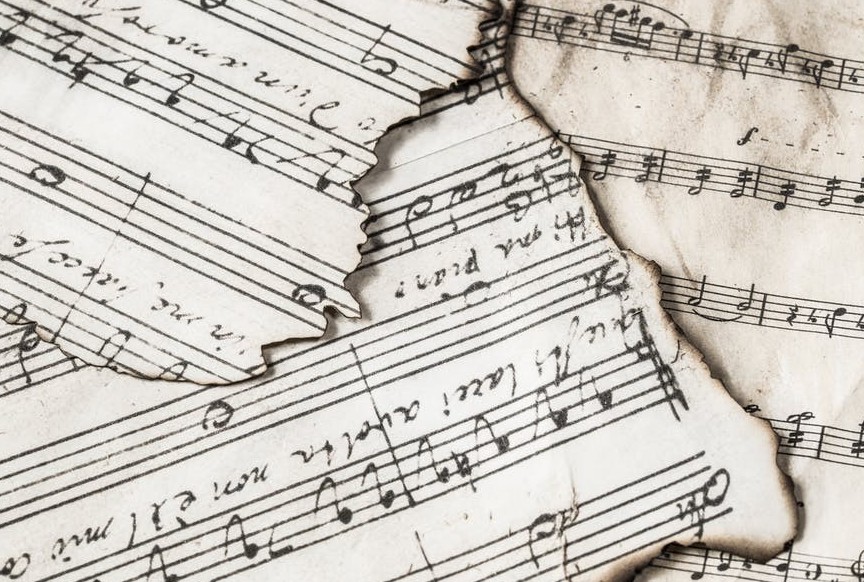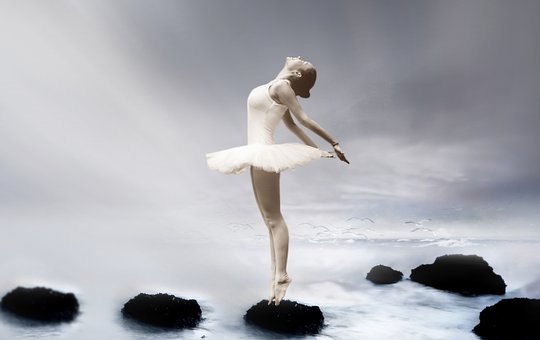Every dancer needs to know how to dance musically. This is because dance and music go together. They are interconnected.
Ezra Pound wrote, “Music begins to atrophy when it departs too far from the dance.”
It is so easy to take music for granted when you dance, as it is always playing in the background. Don’t treat the music merely as a means of keeping time, really listen to the music, as it will inspire, motivate and actually make you a better dancer.
 So Why Do We Have Music In Dance?
So Why Do We Have Music In Dance?
Music provides the rhythm, tempo and fundamental pulse to which the dancer should dance. It indicates where you should be at certain moments.
Even if you are simply dancing to a drum beat, you need to dance forcefully and listen for the accents.
When melody and harmony join rhythm and tempo, the music offers abundant information and guidance to the dancer.
How To Dance Musically
You as a dancer needs to find out what the personality of the music is and then bring it out in yourself. This is the path to take if you want to know how to dance musically.
So as delicate music will call for delicate dancing, loud strong music will call for bigger and bolder movements.
So you need to be versatile as a dancer so that you can dance sharply to staccato or pizzicato music and more fluidly to legato music so that you can connect your steps in smooth fluid elongated and beautiful lines.
The next level on how to dance musically is to consider the phrasing of the music.
Just as music phrases connect individual notes, movement phrases connect individual steps. Your dancing should be like a pearl necklace. Although each pearl is beautiful by itself, the whole necklace is even more so.
Train your ear to listen for the way that the music changes dynamics, climaxes, and cadences and think about what you would emphasize were you to sing the melody line and shape your dance accordingly.
Musicality is more than simply dancing in time with the music. It is the ability to hear subtle qualities and structures within the music and then have the gift to be able to communicate them through your dancing.
As a dancer, you should also be having some sort of music training as learning to read music and help you tremendously as a dancer. Try listening to different types of music outside of dance class and try and identify the rhythm by simply allowing your hand to beat gently along with the music. Your hand should automatically accent the downbeat, enabling you to differentiate between a march (4/4 timing) and a waltz (3/4 timing). Once you have your timing off pat, you can graduate to more complicated music.
If you know how to dance musically, you can solve a lot of dance problems too. When a turn, for instance, isn’t working or you’re behind in a tricky combination, listen to the rhythm and accent of the music. You may turn better by changing the rhythm or jump a bit quicker by changing the accent.
Music can give you that push that you may need to get through a long and tough variation. Simply think of riding the music the way a surfer rides the waves and you won’t run out of breath so quickly.
Should You Count Your Music?

Well, the answer to this is yes and no. It is important sometimes when you are developing an ear for the music in the beginning stages of your dance training to be able to count the music and hear the beats, but you don’t want to end up being a robotic dancer, so sometimes it helps just to listen and interpret.
I am sure you have heard your teacher saying on occasion, ‘count money, not music.’ This is so that you can develop musical sensitivity.
While cultivating your own musicality, it also important not to lose sight of the fact that counting is still an essential skill for dancers. Some dancers are naturally musical while others need time to develop an ear and in this case, counting does help a lot.
Sometimes the choreography in a group requires counting so that the group can move in unison, but if you have a solo, try and interpret the music as you are dancing to make it your own.
With some music, it is impossible to count like the music in Stravinsky’s complex ‘The Rite of Spring.’ The dancers had such trouble with this music that the choreographer Nijinsky had to stand in the wings and count it for them. Unfortunately, the audience rioted because they did not like the ballet, so the dancers could not hear him.

